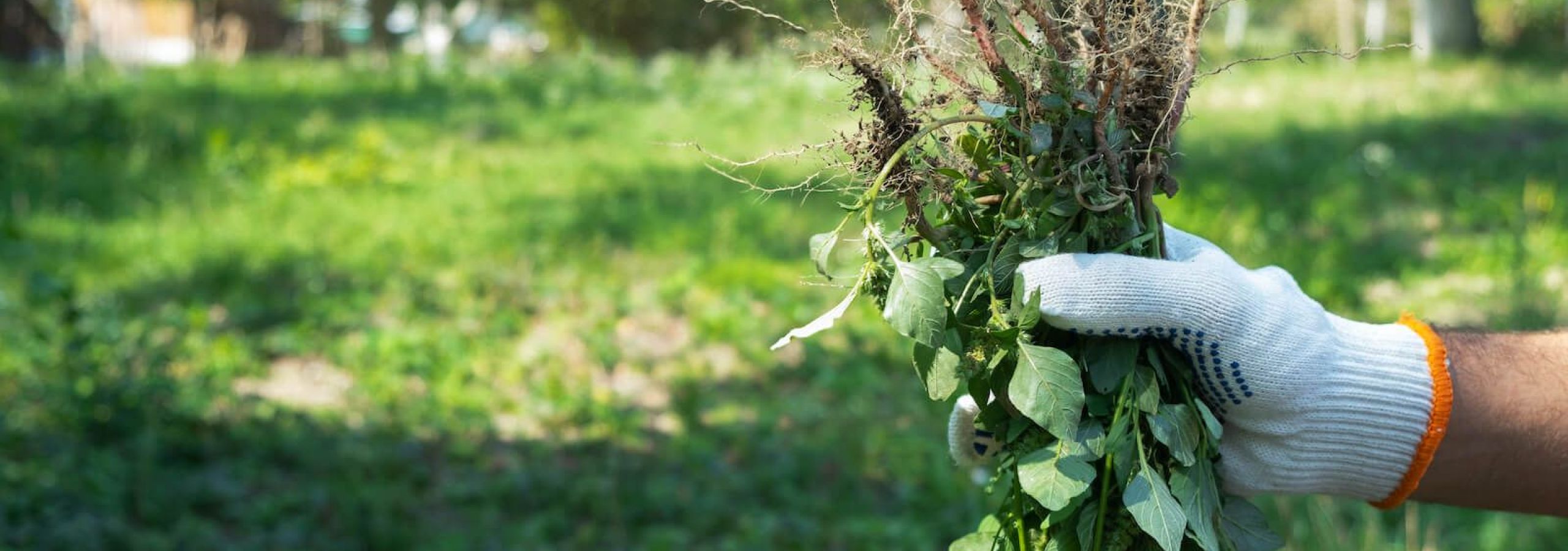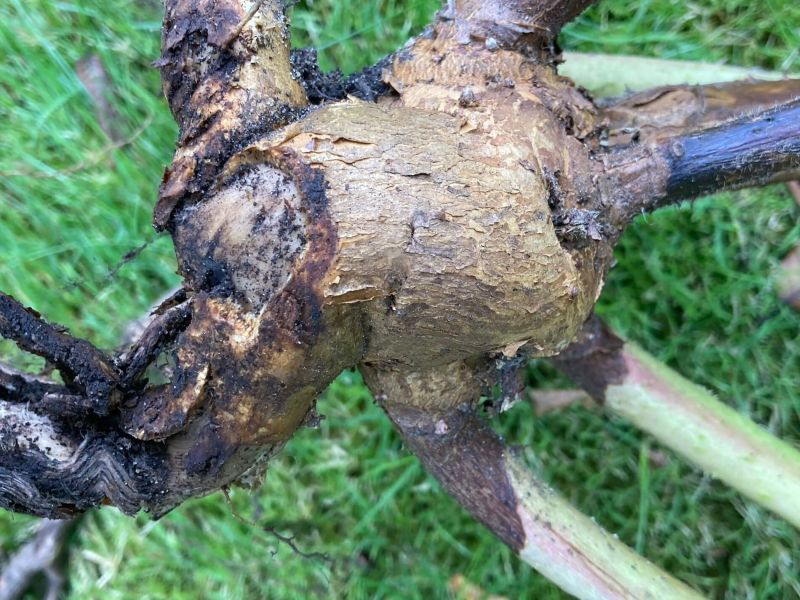Discover five different garden weeds that are fast-spreading and invasive, causing issues for domestic and commercial green spaces across the UK.
Invasive weeds present in the UK include the horsetail, bindweed, aklanet, acanthus mollis and Japanese knotweed. Removing these can be troublesome but it is important you do not turn a blind eye to the problem and enable it to escalate out of control.
In the ongoing battle to keep British gardens healthy and presentable, invasive weeds pose a tricky green challenge and a need for specialist invasive weed control. Here, we will delve into each of these weeds you might encounter in the UK and how to tackle them.
What are invasive garden weeds?
Whilst every growing plant has merit in its own right, when you are looking to maintain a thriving, balanced garden, sometimes there are uninvited guests that often make regular reappearances. Weeds are plants growing in areas where they are not wanted.
They are often resilient, hardy plants that survive and thrive in normal garden conditions. Some weeds are problematic for other plants, competing for precious space, light, nutrients and water.
Getting rid of weeds varies in difficulty depending on which type of plant is being dealt with.
Horsetail (Equisetum arvense)
Horsetail plants are amongst the oldest surviving on the planet, with horsetail fossils dating back hundreds of millions of years, predating the dinosaurs. In that time, they’ve learnt a thing or two about resilience!
Horsetail is one of the most persistent weeds seen in British gardens, although it is often confused with the aquatic marestail.
Horsetail weeds grow in dense, brush-like shoots that vaguely resemble miniature pine trees. These plants reproduce through spores, but are also spread by underground stems known as rhizomes. These rhizomes can grow up to two metres deep underground.
Dealing with a horsetail infestation requires skill, patience and attention to detail. If even a small root fragment is left, it can regenerate and grow back.
Whilst horsetail can be a pretty addition to a garden, and is even said to have antifungal properties that make it useful as an organic liquid fertiliser, its dense spreading habit will outcompete other plants, so it is often seen as a weed that needs to be removed.
Simply using weedkillers often will have limited results. There are a few methods to remove horsetail from your garden.
- Pulling or cutting off new growth by removing the shoots as soon as they appear will weaken the horsetail, although it is important to note that this will not completely remove the weed. However, it will keep clear areas of soil for other seedlings and plants to grow.
- Forking out the rhizomes, whilst labour-intensive, is amongst your best bets to remove horsetail. If done regularly, it will help to weaken the growth of the weed.
- Avoid disturbing the soil, through digging or rotavating, as horsetail can grow back from a tiny rhizome fragment.
Overall, removing horsetail requires as much skill as hard work. Whilst enthusiastic home gardeners will be well placed to restrict and contain horsetail, if you are looking for a more permanent, larger-scale solution, speak to specialists such as The Gardensmiths.
Bindweed (Calystegia sepium)
Bindweeds are as beautiful as they are troublesome to gardeners. You’ll recognise their large trumpet-shaped flowers that brighten up many maintained and wild gardens. However, under the surface, bindweed roots can be problematic.
Bindweeds compete with other plants, so despite the many benefits they bring visually and to the ecosystem, they can be seen as weeds. They battle nearby plants for moisture, light, nutrients and space, especially as a result of their extensive root network.
Controlling the spread of bindweed often involves digging out the roots, but you need to be persistent and thorough to be successful.
Without a proper plan in place, it is likely that they will come back again. Starving the area of light, such as by covering the area in mulch, can help to keep bindweed from growing back.
Be warned though, you will need to cover the area for a significant amount of time, in the years, to ensure this is a successful strategy.
Alkanet (Anchusa officinalis and Pentaglottis sempervirens)
Alkanet can very quickly grow from a small cluster of pretty blue flowers into a bristly garden nuisance. Whilst alkanet is not quite as aggressive as either bindweed or knotweed, it is a prolific self-seeder and the bristly leaves are unpleasant to the touch. Alkanet is often mistaken for other borage plants, such as forget-me-nots and comfrey.
Dealing with alkanets is always best to avoid using chemicals and instead use good old-fashioned hard work with the garden tools.
If you have loose soil, use a fork to pull out seedlings. If you dig out the plants, aim to remove as much of the root system as possible, and consistently remove any new growth that appears as soon as possible to contain the spread. Make sure to wear gloves when dealing with alkanet because the foliage is very rough.
Acanthus mollis (Bear’s Breeches)
This might come as a bit of a surprise, but we at The Gardensmiths are seeing persistent problems with Bear’s Breeches in gardens across the south of England. They made it onto the RHS guide to common non-native garden thugs, so we aren’t the only garden specialists to encounter problems with them.
Whilst not traditionally associated with being an invasive species, they can become a garden nuisance. Once established, they spread underground through rhizomes and are resistant to half-hearted removal attempts.
In terms of removal and containment, digging out the roots will help but it will require repeated efforts to completely eradicate bear’s breeches from your garden if it has become established.
Japanese Knotweed (Fallopia japonica)
It wouldn’t be a list of invasive species without a special mention of the dreaded Japanese Knotweed! Even just the mention of these fearsome invasive weeds is enough to send a shiver down many gardeners' spine.
Whilst originally introduced to the UK in the 19th century as an ornamental and decorative garden feature, it quickly outgrew its welcome. Due to the sheer strength, speed of spread and the subsequent impact on property values,
Japanese Knotweed is rightly feared across the country. It can grow through concrete, even being known to disrupt building foundations.
Never attempt to remove Japanese Knotweed by yourself, not only will you find it very difficult, but you will likely make the issue worse and have very little success.
As professional garden specialists, our Japanese Knotweed Removal service is required due to the difficult nature of self-removal.
General strategies for controlling invasive garden weeds
As with most types of control, early detection is vital. Whilst you should be on alert throughout the year, it is springtime when you should remain most vigilant.
Spotting new growths early, before they take hold, is your best bet to tackle weeds before they take over.
What you compost is very important. Don’t compost invasive weeds, unless you are certain your composting system will reach a high enough temperature to kill seeds and roots.
After putting in the hard work to dig them out, the last thing you want to do is undo your hard graft by reintroducing them into your garden through compost.
In many situations, calling in the experts is often a shrewd move. Here at The Gardensmiths, we are experts at invasive weed control as well as bramble removal, bamboo clearance and many more specialist garden services. We combine a brains-with-brawn approach, offering both proactive and reactive services to keep your garden under control.
Contact us to get a quote.


